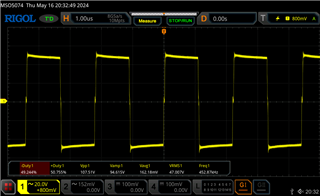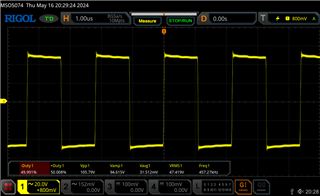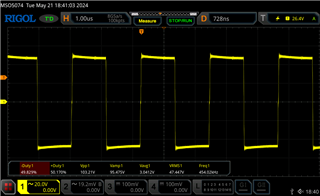Hello,
I have designed a board that works and performs well, however, it dissipates slightly more than it should on idle (the inductors get warm + the heatsink too).
I have noticed by measuring across OutA/OutB and OutC/OutD with differential probe that the square waves are not crossing exactly at zero.
I compared this with a very similar designed board, and in the other one the cross perfectly.
Do you know what components could cause this difference? It appears like the channels have different duty cycle.
It doesn't matter if load is there or not.


Regards,




